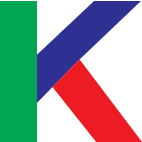What is Vektorelle Classic
This game was born as a tool to increase the child’s potential. It can help him understand and interiorize a small but fundamental aspect of access to many subjects he will encounter as he grows up. Vektorelle was born as a tool that is itself a “topic” and consistent explanation of the “Cartesian space” key topic for many theoretical and practical applications in mathematics, physics, chemistry, and design later in school. The importance of the tool is its contribution to access over time to the exercise of rational thought, which through a minimum threshold of understanding of scientific subjects.
- Vektorelle Classic is a modular, ingenious game open to thousand possibilities
- It makes the child literate about the relationship between space and numbers
- It is a methodical revolution in the understanding of Cartesian space
- It is uniquely mathematically consistent
- It facilitates access to complex subjects per steps
Modular, ingenious game
Each Vektorelle block is worth one (1) unit and at the same time contains the three pieces of information that define a point in space, X, Y and Z. Contrary to traditional construction blocks, the faces of the cubes grips together following positive and negative direction, + or -, and gripping is made possible for every face of the block in any direction, top-bottom, left-right, front and backward; not just top-bottom.
We can play constructions free or with booklet figures. We can use the cubes in the fun board-games combined with cards, dice, pawns and accessories. Without realising it we will always practice the principle of X, Y, Z, plus, and minus signs alignment, in the very act of playing. Then, later on, we will build the three Cartesian Coordinates with the same cubes. We will use them with the naturalness of a game, no longer for puzzles and brain teasers but to consolidate mathematical principles. To add segments, define algebraic solids and visualize curves. We will be able to run consistent curves, not using monitors & chalkboards, but in real space in front of us. We will “touch” the curve! And the actual size of that curve, its perception, will be the same and clear for everyone; Pupils and Teachers at a table, in a classroom, in a school or everyone at home sharing the experience in remote.
Promotes literacy of the relationship between space and numbers
Vektorelle is an innovative tool for disseminating the abstract principle of Cartesian Space. The traditional approach with 2d tools (flat visualization) and passive explanation Teacher-to-Pupils (frontal teaching method) were restraining the access to the topic to a certain age and conditions. The principle is now made accessible to different ages and sensitivities of children and adolescents through the practical act of playing, even overcoming physical limitations as for example might be visual impairment. Numerical and spatial intelligence are stimulated simultaneously, according to keys such as color, shape, joint, free play and narration; involving the senses of sight, touch, and hearing.
Methodical revolution
Vektorelle brings into the space of the real objects -the physical space- the abstract explanation of the Cartesian Space. It does this through its unique cubes, in a “consistent” way; a measurable and non-contradictory form. On the table at home, on the school desk, or under the tree in a park.
Mathematically consistent
Consistency is the quality that defines recognizability and measurability. Consistency is fundamental for the correct imprinting of an element such as the shape of a letter or number. As well as its exact function in the context of other elements and signs. The lack of consistency is what favors interpretation and error. In the very first phase of learning a sign or a principle, consistency is fundamental for the definition of a reference model, thanks to which we can then move freely. Without knowing how consistently recognize and organize the letters of the alphabet, we could not articulate words or sentences.
The relationship between space and numbers, or the awareness of what a point in space is, is fundamental for many subjects that will be encountered in the school career: mathematics, geometry, physics, chemistry, and drawing. The correct mental mapping of points in space is a simple concept, accessible to kids but little exercised. It can be acquired in a serene and above all consistent way, at a suitable age for strengthening numerical intelligence. Traditional block games are randomly mono or multi-directional. They can be beautiful for many other usages, but they do not help in getting a consistent understanding of the cartesian principles.
Facilitates access to complex subjects per steps
Preparing in steps means reducing the effort to understand. Encourages the spontaneous discovery of the concept, by progression, through play and sharing the experience. Reducing the risk of rejection of the topic means limiting subsequent attitudes of emotional escape from subjects related to the topic.
Composition of the project
The open source part “Vektorelle Giulia”: born for visually impaired children but freely adaptable to everyone’s needs. A complete learning set, designed for non-industrial or commercial purposes, with a purely educational aim of free access, vektorelle.com/giulia
The commercial part: born for editorial and gaming projects launched with or without crowdfunding, both for schools and for general public, to support of the Open Source part.
Updated on April 2022
